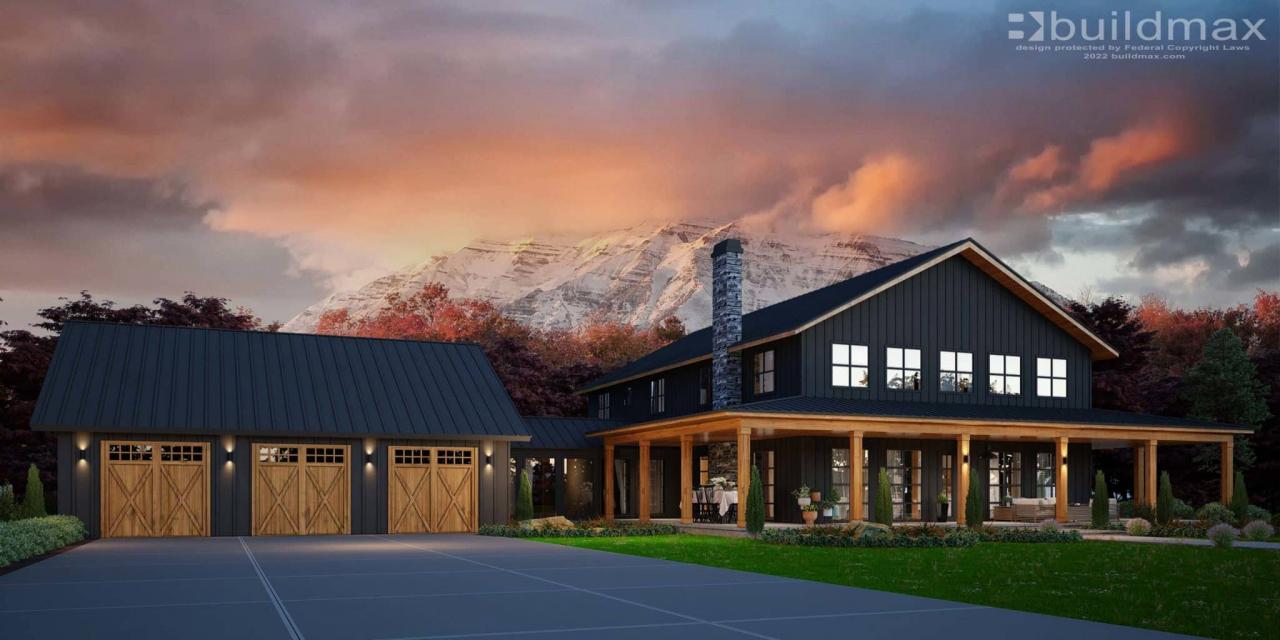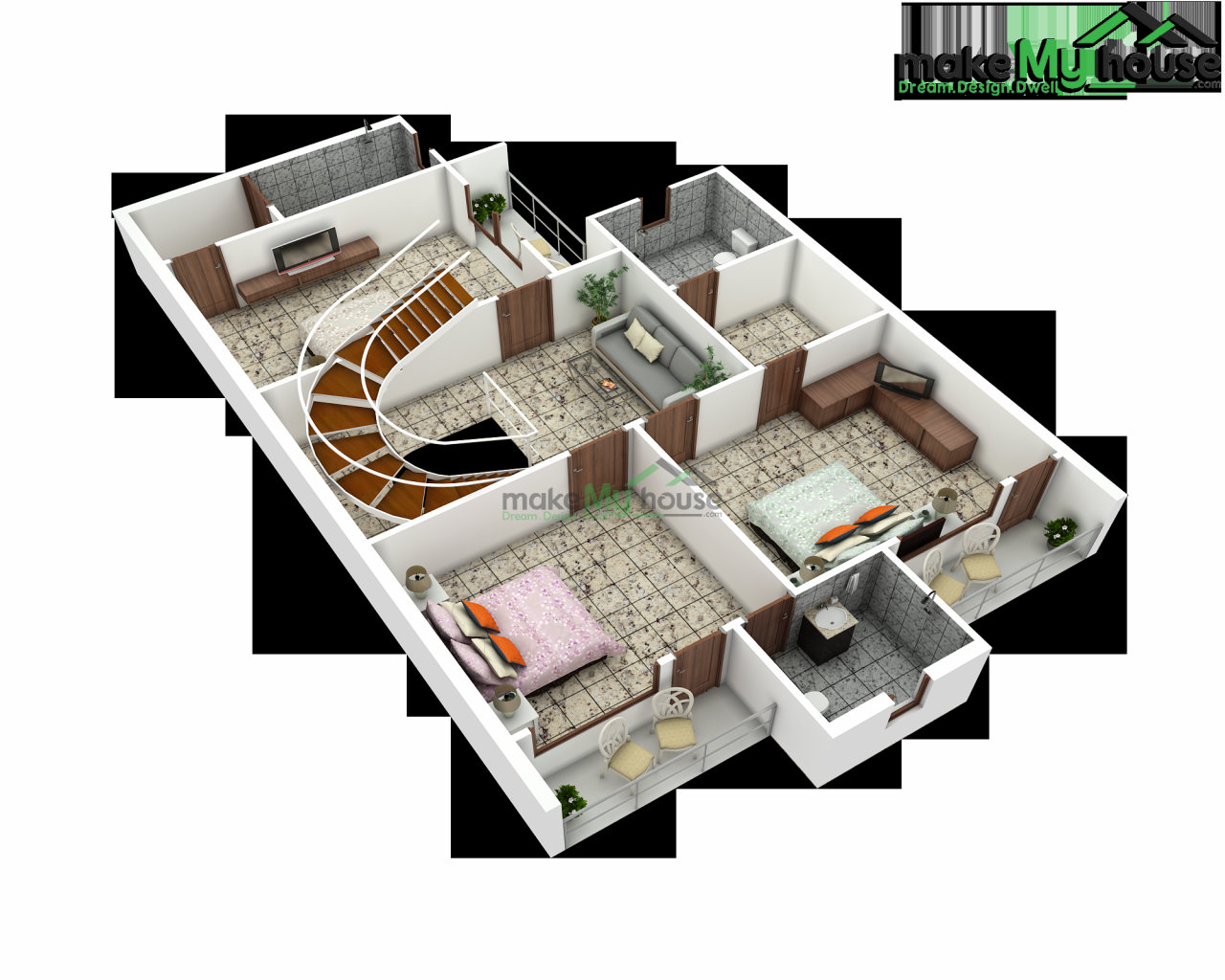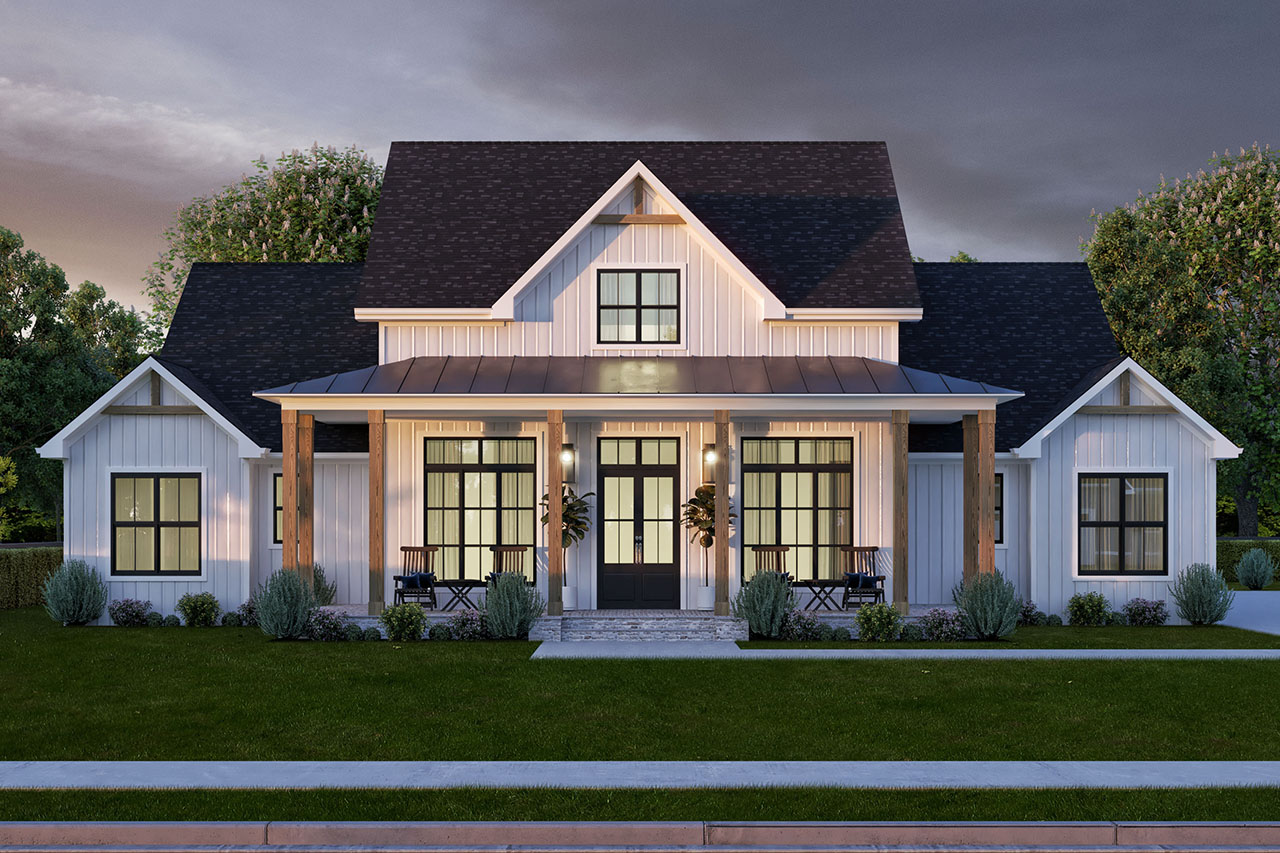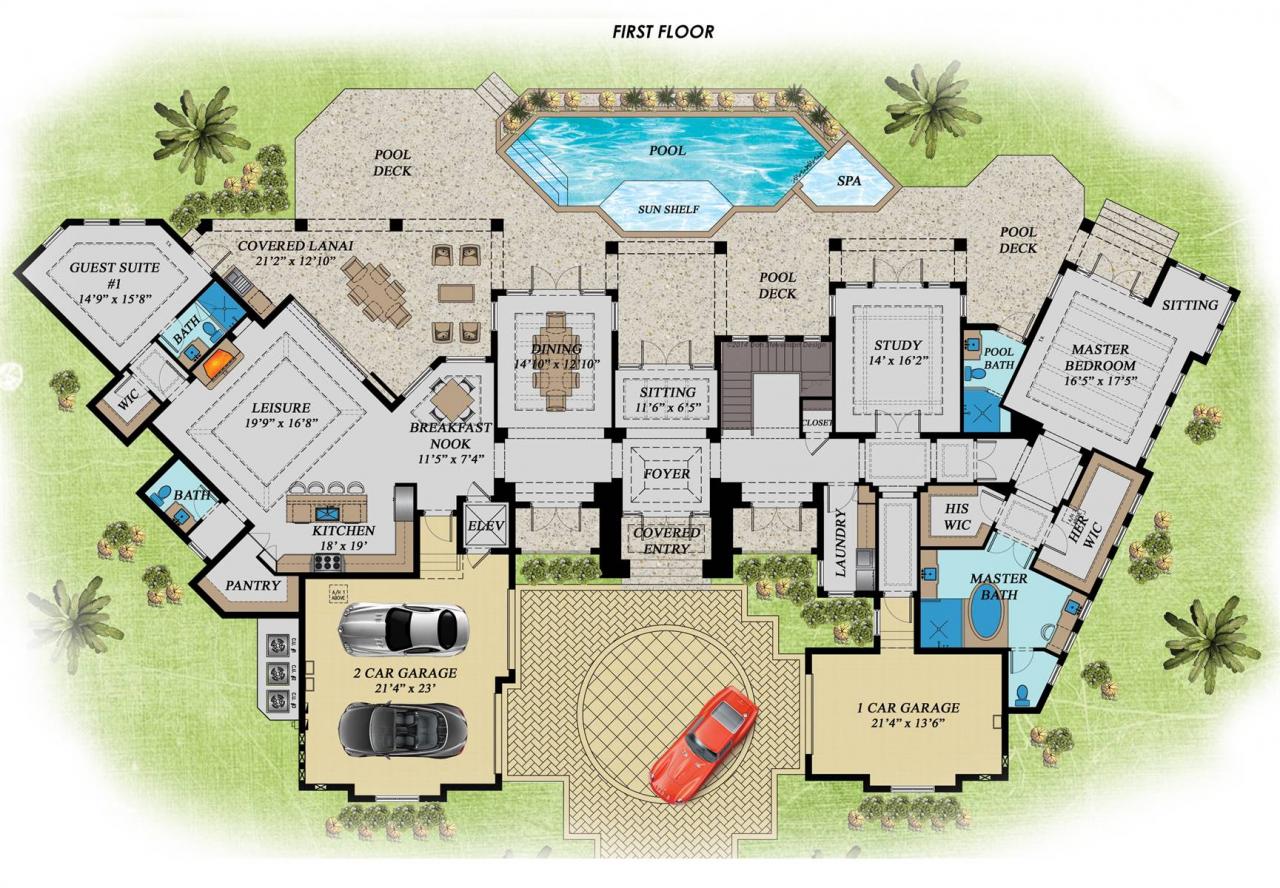Home design plans are more than just blueprints; they’re the blueprints of your dreams! From choosing the perfect style – whether it’s the rustic charm of a Craftsman home, the sleek lines of modern architecture, or the timeless elegance of a Victorian – to meticulously planning the layout, every decision shapes your future living space. This guide dives deep into the world of home design plans, helping you navigate the exciting process of building or renovating your ideal home.
We’ll explore various design styles, crucial factors influencing your choices (like lot size, family needs, and budget), and essential elements of a comprehensive plan. Discover how to leverage software and tools for efficient planning, incorporate sustainable practices, and personalize your design for a truly unique and functional home. Get ready to transform your vision into reality!
Understanding Home Design Plan Types

Choosing the right home design plan is a crucial step in building your dream house. It’s about more than just square footage; it’s about reflecting your lifestyle and personal aesthetic. Understanding the different styles available helps you navigate the options and make an informed decision. This exploration will delve into several popular home design plan types, highlighting their unique characteristics and typical floor plan layouts.
Crafting the perfect home design plan starts with a clear vision. To solidify that vision, browsing through countless images is key; check out this amazing resource for finding the perfect home design photo for my inspiration to jumpstart your creativity. Once you’ve found your muse, translating that inspiration into a functional and stylish home design plan becomes much easier.
Remember, the right picture can be the cornerstone of your dream home.
Home Design Plan Styles: A Comparison
Different home design styles offer distinct visual appeals and functional layouts. Each style carries a unique history and set of defining features that contribute to its overall character. Understanding these differences is key to selecting a plan that perfectly suits your needs and preferences.
| Style | Description | Key Features | Image Description |
|---|---|---|---|
| Ranch | One-story homes characterized by their long, low profile and often sprawling floor plans. | Single-story design, open floor plans, attached garage, large windows, low-pitched roof. | A depiction of a ranch-style home with a wide, low-slung roofline, large windows letting in ample natural light, and a spacious front porch. The landscaping might include neatly manicured lawns and mature trees. |
| Victorian | Ornate and elaborate homes with intricate detailing, steep pitched roofs, and asymmetrical facades. | Decorative trim, gables, turrets, bay windows, wrap-around porches, tall ceilings. | An illustration of a Victorian home showcasing its gingerbread trim, multiple gables, and a steeply pitched roof. A variety of windows of different shapes and sizes are visible, adding to the ornate character. |
| Craftsman | Homes emphasizing natural materials, handcrafted details, and a sense of warmth and functionality. | Low-pitched gable roofs, exposed beams, built-in shelving, wide porches with tapered columns, natural wood siding. | A drawing of a Craftsman bungalow with a low-pitched roof, exposed beams visible under the eaves, and a broad front porch supported by sturdy columns. The overall feel is one of simplicity and natural beauty. |
| Modern | Clean lines, open floor plans, and a focus on functionality and minimalism characterize this style. | Flat roofs, large windows, open floor plans, minimalist decor, sleek finishes, geometric shapes. | A rendering of a modern home with a flat roof, expansive windows offering panoramic views, and a simple, uncluttered facade. The materials appear to be clean and contemporary, with a focus on functionality. |
Open-Concept vs. Traditional Floor Plans
The choice between an open-concept and a traditional floor plan significantly impacts the feel and functionality of a home. Open-concept designs prioritize flow and interaction, while traditional plans emphasize separation and privacy.Open-concept floor plans often feature a seamless transition between the kitchen, dining, and living areas, creating a spacious and sociable environment. This is ideal for families who spend a lot of time together.
Conversely, traditional floor plans feature distinct rooms with defined purposes, offering greater privacy and separation. This layout might be preferred by individuals who value quiet spaces and individual retreats. For example, a traditional layout might feature separate formal dining and living rooms, whereas an open-concept design would combine these spaces. A large kitchen island often acts as a visual and functional divider in an open-concept design, while in a traditional home, walls clearly separate the kitchen from the other areas.
Factors Influencing Home Design Plan Selection: Home Design Plans

Choosing the perfect home design plan is a multifaceted process, influenced by a complex interplay of personal preferences, practical considerations, and external constraints. Understanding these key factors is crucial for making informed decisions and ensuring the final product aligns seamlessly with your vision and lifestyle. This section will delve into the significant elements that shape home design plan selection.
Lot Size and Topography’s Influence on Home Design
The size and shape of your building lot significantly impact the feasibility and style of your chosen home design. A large, flat lot offers greater flexibility, allowing for expansive designs with sprawling layouts, extensive landscaping, and ample outdoor living spaces. Imagine a sprawling ranch-style home with a large backyard perfect for a pool and outdoor entertaining. Conversely, a smaller lot necessitates a more compact design, potentially favoring a narrow-lot home or a multi-story structure to maximize space utilization.
Steep slopes or uneven topography introduce further complexities. Designs must account for site grading, retaining walls, and potentially challenging foundation requirements. A hillside home, for instance, might incorporate split levels or terraced designs to harmonize with the natural landscape. Careful consideration of the lot’s unique characteristics is paramount to creating a home that both complements and utilizes its surroundings effectively.
Family Size and Lifestyle Needs Shaping Home Design Requirements
The size and composition of your family directly influence the space requirements and layout of your ideal home. A growing family might prioritize a design with multiple bedrooms, ample bathroom facilities, and dedicated children’s play areas. Consider a two-story home with a large master suite and several children’s bedrooms, potentially with a shared bathroom. A smaller family, or a couple without children, might opt for a more compact, open-plan design prioritizing shared living spaces over numerous individual rooms.
Lifestyle preferences also play a critical role. Active individuals might desire a home with a dedicated home gym or a spacious backyard for recreation. Those who frequently entertain might prioritize a large open-plan kitchen and dining area, while others might prefer a more secluded, private setting. The ideal design should seamlessly integrate with the family’s daily routines and preferred lifestyle.
Budget and Building Codes’ Role in Home Design Selection
Budget constraints are a significant factor influencing the selection of a home design plan. The cost of construction is directly proportional to the size and complexity of the design. Luxury features like high-end appliances, custom cabinetry, and extensive landscaping add to the overall expense. A realistic budget allows for the selection of a design that balances desired features with financial feasibility.
Staying within a predetermined budget requires careful planning and potentially compromises on less essential elements. Building codes and regulations also play a critical role, dictating minimum standards for structural integrity, safety, and accessibility. These regulations influence the design’s structural elements, energy efficiency requirements, and compliance with local zoning ordinances. A design that adheres to these codes ensures legal compliance and minimizes potential delays or complications during the construction process.
Ignoring building codes can lead to costly revisions and delays.
Key Elements of a Comprehensive Home Design Plan
A well-crafted home design plan is more than just pretty pictures; it’s the blueprint for your dream home, ensuring functionality, aesthetics, and long-term value. A comprehensive plan meticulously details every aspect, from the placement of windows to the flow of traffic throughout the house. This detailed approach minimizes costly mistakes during construction and maximizes the potential of your space.
A professional home design plan goes beyond basic room layouts. It incorporates crucial elements that translate your vision into a tangible reality, offering a clear roadmap for builders and a detailed understanding of the final product for you.
Essential Elements in a Professional Home Design Plan
The following elements are crucial for a truly comprehensive home design plan. Their inclusion ensures a smooth construction process and a finished product that meets your needs and expectations.
- Site Analysis: This includes the property’s topography, orientation to sunlight, prevailing winds, and existing features. This crucial first step informs the overall design, ensuring optimal placement of the house for energy efficiency and aesthetic appeal.
- Floor Plans: Detailed drawings showing the layout of each floor, including room dimensions, door and window placement, and the relationship between spaces. These plans are the foundation of the entire design.
- Elevations: Drawings showing the exterior of the house from different angles, detailing the building’s height, roofline, and facade design. Elevations help visualize the house’s overall aesthetic and its interaction with its surroundings.
- Sections: Cross-sectional views that show the internal structure of the house, including wall thicknesses, ceiling heights, and the placement of structural elements. Sections are essential for understanding the building’s construction and ensuring structural integrity.
- Specifications: A detailed list of materials and finishes to be used throughout the house, including flooring, cabinetry, countertops, and fixtures. This ensures consistency and quality in the final product.
- Electrical Plan: A detailed diagram showing the location of all electrical outlets, switches, lighting fixtures, and electrical panels. A well-designed electrical plan ensures adequate power and convenient access to outlets throughout the house.
- Plumbing Plan: A diagram showing the location of all plumbing fixtures, including sinks, toilets, showers, and water heaters, along with the routing of pipes. This ensures efficient plumbing and minimizes potential issues during construction.
- Mechanical Plan: A diagram showing the location of HVAC systems, including ductwork, vents, and returns. This ensures proper ventilation and climate control throughout the house.
- 3D Renderings and Visualizations: These provide a realistic representation of the finished house, allowing you to visualize the design and make adjustments before construction begins. This is crucial for making informed design decisions.
Sample Floor Plan
Imagine a two-story home. The following describes a possible layout emphasizing interconnectivity and efficient space usage.
Imagine a floor plan with a central hallway connecting the following spaces: To the left, a spacious living room (approx. 20′ x 15′, open to a dining area (approx. 12′ x 10′), creating a seamless flow for entertaining. Adjacent to the dining area is a modern kitchen (approx. 15′ x 10′), featuring an island and ample counter space.
A powder room is conveniently located near the entryway. On the right side of the hallway, a home office (approx. 10′ x 10′) offers a quiet workspace, while a sizable master bedroom suite (approx. 18′ x 15′) with an ensuite bathroom and walk-in closet is located at the back of the house for privacy. Upstairs, two additional bedrooms (approx.
12′ x 10′ each) share a full bathroom. A laundry room is also conveniently placed on the second floor.
Effective Space Utilization Techniques
Maximizing space in a home design is crucial, especially in smaller homes or for those who desire a more open and airy feel. Clever design strategies can make a significant difference.
- Open-Plan Living: Combining the living, dining, and kitchen areas into one large space creates a sense of spaciousness and improves flow between areas.
- Built-in Storage: Incorporating built-in shelving, closets, and cabinets maximizes storage space while maintaining a clean and organized aesthetic. This is particularly useful in smaller homes.
- Multi-functional Furniture: Utilizing furniture with multiple purposes, such as a sofa bed or a coffee table with storage, saves space and adds versatility.
- Vertical Space: Utilizing vertical space with tall bookshelves or lofted beds creates additional storage or living area without expanding the footprint of the house.
- Natural Light: Maximizing natural light through large windows and skylights creates a brighter and more spacious feeling, reducing the need for artificial lighting.
Software and Tools for Home Design Planning

Choosing the right software or tools is crucial for bringing your dream home to life. The market offers a wide array of options, each with its own strengths and weaknesses. Understanding these differences will help you select the perfect tool to match your skills, budget, and project complexity. This section explores various software options and online tools, highlighting their features and limitations.
Comparison of Home Design Software
Selecting the right software depends on your needs and technical skills. Below is a comparison of popular home design software options, considering key features, pricing, and user-friendliness.
| Software Name | Key Features | Pricing | User-Friendliness |
|---|---|---|---|
| SketchUp | 3D modeling, extensive library of models, rendering capabilities, plugin support. Suitable for both beginners and professionals. | Free version available; paid pro version offers advanced features. | Relatively easy to learn, with a large online community offering support. |
| Sweet Home 3D | Intuitive interface, 2D and 3D views, easy furniture placement, suitable for simple designs. | Free and open-source. | Very user-friendly, ideal for beginners. |
| Planner 5D | 3D modeling, extensive material library, augmented reality features, online collaboration. | Free version with limitations; paid subscription unlocks full features. | User-friendly interface, suitable for various skill levels. |
| Autodesk Revit | BIM (Building Information Modeling) software, highly detailed modeling, collaboration features, ideal for professional architects and designers. | Subscription-based, expensive. | Steep learning curve, requires significant training. |
Online Home Design Tools vs. Professional Software
Online home design tools often offer a simplified, user-friendly approach, perfect for quick planning or initial visualization. They typically feature drag-and-drop interfaces and pre-built templates. However, they may lack the precision, customization, and advanced features of professional software. Professional software, on the other hand, provides greater control, accuracy, and detail, but usually requires a steeper learning curve and a higher investment.
For instance, a homeowner planning a simple kitchen remodel might find an online tool sufficient, while an architect designing a complex multi-story building would require the power of professional software like Revit.
Crafting the perfect home design plan requires careful consideration of your style and needs. For those seeking a clean, uncluttered space, exploring a modern home design with a minimalist aesthetic can be incredibly rewarding. Ultimately, your home design plan should reflect your personal vision, creating a space that’s both functional and aesthetically pleasing.
Applying Basic Design Principles in Home Design Plans
Effective home design relies heavily on fundamental design principles. Balance, proportion, and scale are crucial for creating aesthetically pleasing and functional spaces. Balance refers to the visual weight distribution within a room. Symmetrical balance creates a formal and traditional feel, while asymmetrical balance offers a more dynamic and modern look. Proportion relates to the size relationships between different elements in a room, ensuring harmony and visual appeal.
For example, a large sofa shouldn’t be dwarfed by a tiny coffee table. Scale refers to the size of objects in relation to the overall space. Oversized furniture in a small room can make it feel cramped, while undersized furniture can make it feel empty. Consider using a scale model or digital representations to ensure appropriate proportions and scale before committing to final plans.
For instance, a scale drawing will allow you to visually assess if a planned king-sized bed will fit comfortably in the master bedroom without overcrowding the space.
Sustainability and Energy Efficiency in Home Design Plans

Building a sustainable and energy-efficient home isn’t just a trend; it’s a responsible choice for the future. By incorporating eco-friendly practices and technologies from the initial design phase, you can significantly reduce your environmental footprint and lower your utility bills. This involves careful consideration of materials, building techniques, and systems to create a home that minimizes energy consumption and maximizes resource efficiency.
Incorporating Sustainable Materials and Practices
Sustainable building materials are key to creating an environmentally friendly home. Choosing these materials reduces the overall environmental impact of construction and contributes to a healthier living environment. This involves selecting materials with low embodied energy (the energy used to produce, transport, and install the material), prioritizing recycled or reclaimed materials whenever possible, and opting for locally sourced products to reduce transportation emissions.
For example, using bamboo flooring instead of traditional hardwood reduces deforestation, while employing recycled steel in the framing minimizes landfill waste. Furthermore, utilizing sustainably harvested lumber, certified by organizations like the Forest Stewardship Council (FSC), ensures responsible forestry practices. The use of natural insulation materials like sheep’s wool or cellulose also contributes to a healthier indoor environment and reduces reliance on petroleum-based products.
Maximizing Natural Light and Ventilation
Strategic home design can dramatically reduce the need for artificial lighting and mechanical ventilation. Optimizing window placement and size to maximize solar gain during the day minimizes reliance on electric lighting. South-facing windows (in the Northern Hemisphere) can capture significant amounts of sunlight, reducing energy consumption for heating. Similarly, strategically placed windows and skylights can illuminate interior spaces, reducing the need for artificial lighting.
Proper ventilation is equally crucial. Cross-ventilation, achieved through strategically placed windows and doors, allows for natural airflow, reducing the need for air conditioning and improving indoor air quality. The design should consider prevailing wind patterns to maximize natural ventilation and minimize energy usage for cooling. For example, a house with strategically placed windows on opposite sides can create a natural breeze, effectively cooling the interior space.
Energy-Efficient Appliances and Systems
Selecting energy-efficient appliances and systems is crucial for minimizing energy consumption. This includes opting for appliances with high Energy Star ratings, which indicate superior energy efficiency. Choosing high-efficiency heating, ventilation, and air conditioning (HVAC) systems is also vital. These systems use less energy to heat and cool the home, leading to significant energy savings. Furthermore, investing in solar panels to generate renewable energy reduces reliance on the grid and lowers carbon emissions.
For example, a heat pump system can provide both heating and cooling with significantly higher efficiency compared to traditional systems. Similarly, LED lighting consumes significantly less energy than incandescent bulbs, contributing to overall energy savings. Smart thermostats can also be incorporated to optimize energy usage based on occupancy and temperature preferences.
Home Design Plan Customization and Modifications
Building your dream home often involves adapting pre-designed plans to perfectly suit your lifestyle and the unique characteristics of your land. While starting with a ready-made blueprint offers a cost-effective base, personalization is key to creating a truly bespoke living space. This section explores the common modifications homeowners make and the process of collaborating with professionals to achieve their vision.Common modifications homeowners make to pre-designed home plans frequently involve adjustments to the layout, finishes, and even the overall footprint of the house.
These changes range from simple alterations, like repositioning a window or adding a closet, to more significant structural modifications, such as extending a room or adding a new wing. The level of customization depends entirely on the homeowner’s budget, the flexibility of the original plan, and the expertise of the design professionals involved.
Common Home Plan Modifications
Homeowners frequently adjust pre-designed plans to better fit their needs and preferences. Popular modifications include expanding or shrinking rooms to accommodate specific furniture or activities, altering the kitchen layout to improve workflow, adding or removing bedrooms or bathrooms, and adjusting the placement of windows and doors to optimize natural light and views. For example, a family might enlarge a living room to create a more spacious area for entertaining, or a homeowner might add a sunroom to maximize natural light and create a tranquil space.
These changes can significantly impact the functionality and aesthetic appeal of the final home.
Collaborating with an Architect or Designer for Customization
The process of customizing a home plan with a professional is collaborative. It begins with a detailed discussion of the homeowner’s needs, preferences, and budget. The architect or designer will then review the existing plan, identifying areas suitable for modification and assessing the feasibility of the homeowner’s requests. This often involves multiple design iterations, with the homeowner providing feedback and making adjustments until a final design is achieved.
The architect will then prepare detailed construction documents, ensuring that all modifications meet building codes and regulations. The collaborative nature of this process ensures the homeowner’s vision is realized while maintaining structural integrity and compliance with building standards.
Adapting a Standard Plan to a Specific Site
Adapting a standard home plan to a specific site involves a careful consideration of several factors, including the topography of the land, the orientation of the sun, prevailing winds, and local building codes. A step-by-step guide to this process ensures a smooth transition from blueprint to reality.
Step-by-Step Site Adaptation of a Standard Home Plan, Home design plans
- Site Analysis: A thorough assessment of the site’s characteristics, including soil conditions, existing vegetation, and utilities, is crucial. This helps determine the best location for the house and informs design decisions related to foundation, drainage, and landscaping.
- Orientation and Views: Optimizing the home’s orientation to maximize natural light and take advantage of desirable views is essential. This may involve rotating the house on the lot or adjusting the placement of windows and doors.
- Topography Integration: The design should complement the existing topography. This may involve terracing, retaining walls, or other site-specific solutions to create a harmonious relationship between the house and its surroundings.
- Building Codes and Regulations: Ensuring compliance with local building codes and zoning regulations is paramount. This may involve modifications to the plan to meet specific requirements, such as setbacks or height restrictions.
- Utility Connections: The plan needs to accommodate the location of existing utilities, such as water, sewer, electricity, and gas lines. This often involves adjustments to the foundation or utility hookups.
Following these steps ensures the successful integration of a standard home plan into a specific site, resulting in a functional and aesthetically pleasing home that complements its environment. The process requires careful planning and collaboration with professionals to address the unique challenges and opportunities presented by each site.